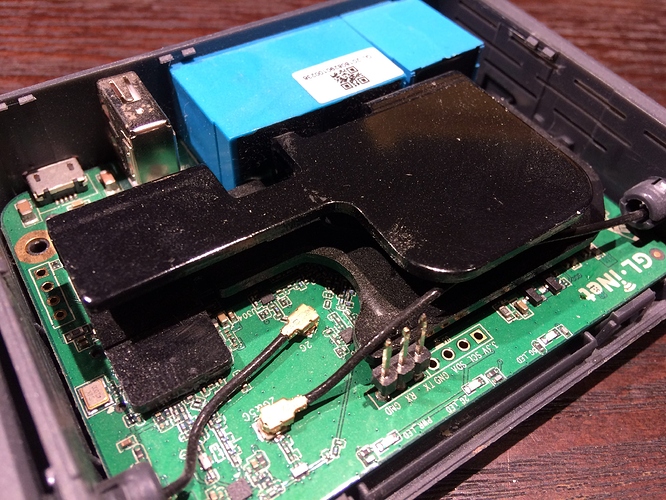I wouldn't have any confidence in that device either.
Fast VPN performance, small size, LTE modem, and battery are mutually exclusive. While 10 Mbps may not seem fast, for VPN that is a significant amount of processing power. More processing power means:
- Higher power consumption
- Higher heat dissipation needs
Higher heat dissipation means a heat sink and suitable airflow is required -- not small. The GL-AR750S has a huge heat sink internally (compared to its tiny size).
Higher power consumption means that a battery pack for a given run time is significantly larger
An LTE modem can draw 1 A when operating. This is a non-trivial amount of current to draw from a battery pack. Again, increasing size.
Realistically, something like the GL-AR750S, a 10 Ah or larger (10,000 mAh), 5 V pack, and an external USB case for an LTE modem is about as small and light as you're going to get.
For single-core, MIPS-based devices in this class, I'd figure around 1 A (at 5 V) average draw when idle with an LTE modem, around 1.5 A when active. I'd also figure about half of the claimed capacity of a battery pack. So a 10 Ah pack is probably good for 3-4 hours of run time. Those packs generally use Li-ion batteries at this time, which have about the highest energy density of what is available to consumers, especially in the 18650 cells.
The next-gen, battery-powered, integrated LTE device has not been announced b y GL.iNet on their website, forum, or Twitter feed, from what I have seen. There is the GL-X750 "Spitz", but its QCA9531 clocked at 650MHz is likely borderline for obtaining 10 Mbps OpenVPN throughput.
Edit: Once you're into ARM-based processors, you're well out of the range of "pocketable" size and battery operation.
